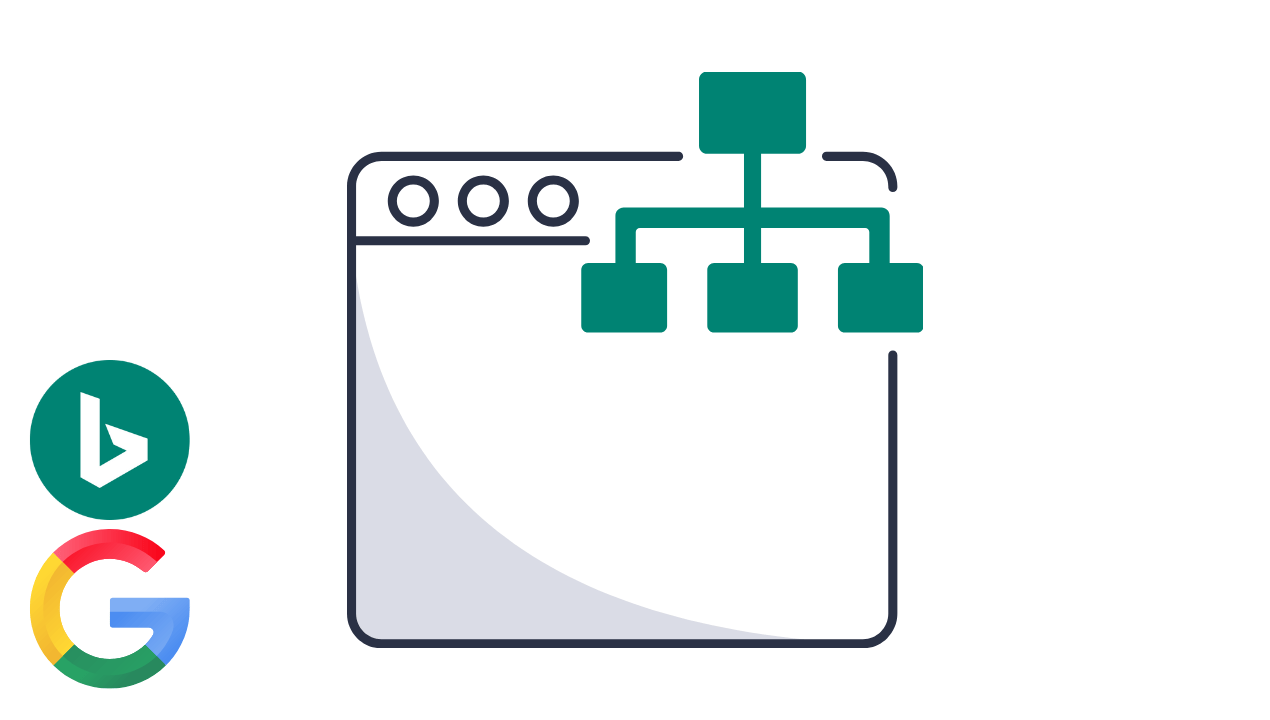When it comes to getting your content indexed quickly and accurately, nothing beats a well-structured sitemap. Whether you run a blog, an e-commerce store, or a massive news site, your sitemap is like a roadmap for search engines. It tells Google and Bing where your important content lives, when it was last updated, and how it fits into the bigger picture of your site. In this article, you’ll learn how sitemaps work for Google and Bing search engines, a technical SEO deep dive.
Many site owners know they should have a sitemap, but few understand how it really works. This deep dive will walk you through the technical side of sitemaps for both Google and Bing, so you can use them as a powerful tool in your SEO strategy.
What is a Sitemap in Technical SEO Terms
A sitemap is an XML file (or a set of XML files) that lists URLs you want search engines to discover. Unlike a regular navigation menu, it’s built specifically for crawlers. Each URL in the file can also include metadata such as the last modification date, how frequently the page changes, and a priority rating.
The primary purpose is to help search engines find and index content more efficiently, especially for sites with complex structures, thousands of pages, or new content that needs to be discovered quickly.
Why Sitemaps Are Critical for Both Google and Bing
Search engines can discover content without a sitemap, but they might miss important pages, particularly if those pages are not well linked internally. This is especially true for:
- Large websites with deep navigation
- Sites that publish frequent updates (news sites, blogs)
- Websites with rich media content like videos and images
- New domains with few backlinks
- E-commerce platforms with complex category hierarchies
For Google, a sitemap is a strong crawl optimization signal. For Bing, it’s both a discovery tool and a priority indicator. The differences in how each engine uses sitemaps make it worth optimizing for both.
How Google Processes Sitemaps
Google treats a sitemap as a hint, not a directive. It will use the URLs you submit to help guide its crawlers, but it doesn’t guarantee all of them will be indexed. Google also cross-references sitemap data with its own crawl findings to validate accuracy.
If your sitemap includes stale or broken URLs, Google may eventually ignore the file. This makes regular updates essential. For Google Search Console, you can submit your sitemap directly and monitor as a technical SEO sitemaps:
- Number of discovered URLs
- Number of indexed URLs
- Errors like unreachable URLs or incorrect formats
- Last read date by Googlebot
How Bing Processes Sitemaps
Bing tends to rely on sitemaps more directly than Google, especially for new or updated content. The Bing Webmaster Tools dashboard allows for bulk submission of URLs, and sitemaps help prioritize these crawls.
One advantage with Bing is its more generous indexing of fresh pages submitted via sitemap. If your site gets significant traffic from Bing (including Yahoo, which uses Bing’s index), maintaining an accurate sitemap can lead to faster visibility.
Table: Sitemap Behavior in Google vs Bing Sitemaps
| Feature or Behavior | Bing | |
|---|---|---|
| Use of Sitemap | Hint to guide crawling | Stronger reliance for discovery |
| Indexing Guarantee | No guarantee, based on quality and relevance | No guarantee, but higher trust in submissions |
| Fresh Content Crawling | Moderate speed unless high authority | Often faster for new or updated content |
| Preferred Format | XML (supports video, image, news extensions) | XML (supports video, image, news extensions) |
| Submission Method | Google Search Console | Bing Webmaster Tools |
| Max URL Count Per Sitemap | 50,000 | 50,000 |
| Impact of Errors | May cause sitemap to be partially ignored | May delay crawl of listed URLs |
Best Practices for Google & Bing Sitemaps Creation
To get the most out of your sitemap for both Google and Bing, follow these technical best practices:
Keep URLs clean and canonical
Only list the canonical version of each URL. Avoid parameters unless they are essential to the content.
Update regularly
Each time you add, remove, or significantly update content, update the sitemap. The <lastmod> tag should reflect the real date of change.
Segment large sites
If you have more than 50,000 URLs, create multiple sitemaps and link them in a sitemap index file. This improves manageability and processing speed.
Include media metadata
For image-heavy pages, use the image sitemap extension to give search engines context. For videos, the video sitemap extension can help surface content in video search results.
Host the file in the root
Place your sitemap at https://example.com/sitemap.xml so it covers the entire site. If you have subdomains, create separate sitemaps for each.
Validate your file
Use sitemap validators or built-in tools in Search Console and Bing Webmaster Tools to ensure formatting is correct and there are no unreachable URLs.
Common Mistakes That Hurt Sitemap Performance
Even experienced SEOs make errors that cause sitemaps to be less effective:
- Listing URLs that are blocked by robots.txt
- Including non-200 status URLs (404, 301, 302)
- Forgetting to update after major content changes
- Overloading a single sitemap instead of splitting it
- Using incorrect date formats in
<lastmod>tags
These mistakes can make search engines question the accuracy of your sitemap and reduce its value as a crawl resource.
How to Submit Your Sitemap to Google and Bing
For Google, log in to Search Console, choose your property, go to “Sitemaps” in the left menu, and enter the sitemap URL. Google will process it and provide reporting on discovery and indexing.
For Bing, log in to Bing Webmaster Tools, select your site, navigate to “Sitemaps” under “Configure My Site,” and submit the URL. Bing also allows API-based submissions, which can be handy for sites with frequent updates.
Advanced Tips for Technical SEOs
If you want to go beyond the basics, consider these advanced strategies:
Dynamic sitemaps for large sites
Use scripts or CMS plugins to generate sitemaps dynamically so they’re always up to date without manual editing.
Priority and change frequency tags
Although search engines don’t always use <priority> and <changefreq>, they can still be helpful for signaling relative importance.
Separate sitemaps by content type
Create individual sitemaps for blog posts, product pages, videos, and news content. Submit them separately for better tracking.
Use the index file for multiple sitemaps
A sitemap index file lets you manage multiple sitemaps and ensures search engines discover all of them efficiently.
Monitor log files
Check server logs to see how often Googlebot and Bingbot request your sitemap and which URLs are being crawled.
Measuring the Impact of Sitemaps
After submission, track changes in index coverage, crawl frequency, and ranking visibility. In Google Search Console, compare “Discovered URLs” against “Indexed URLs” to identify pages that need better optimization. In Bing Webmaster Tools, look at crawl stats and impression trends.
Over time, a well-maintained sitemap can help you:
- Shorten the time from publishing to indexing
- Improve visibility for deep-linked or low-traffic pages
- Support structured data visibility for images and videos
- Maintain control over which pages search engines see as priority
Final Thoughts
Sitemaps may not guarantee indexing, but they remain one of the most valuable technical SEO tools for guiding Google and Bing toward your most important content.
Think of them as a curated invitation to your site. You’re telling search engines, “These are the pages that matter most, and here’s when and how they’ve changed.” When used strategically and kept accurate, sitemaps can speed up discovery, improve crawl efficiency, and strengthen your overall SEO performance.
In the fast-moving world of search, the sites that make it easy for crawlers to do their job will always have an edge.








